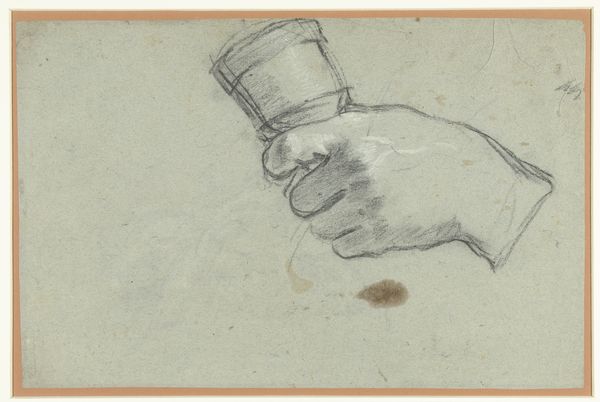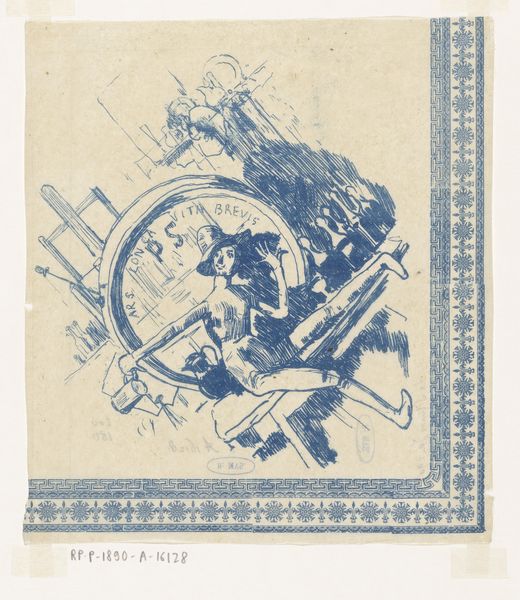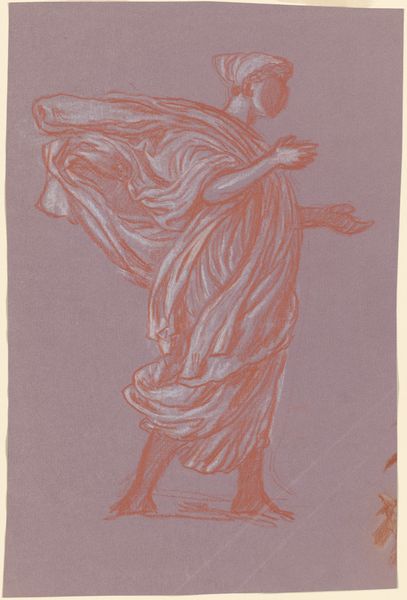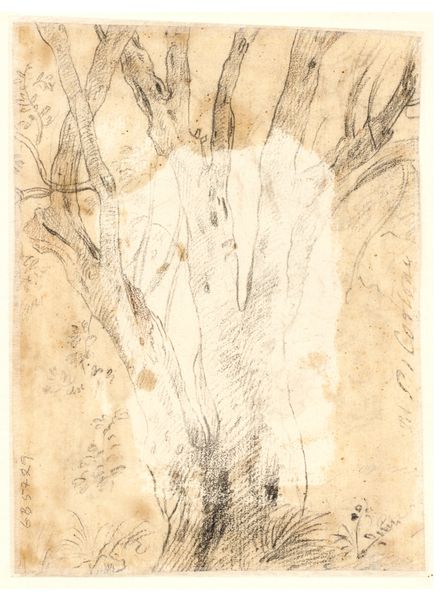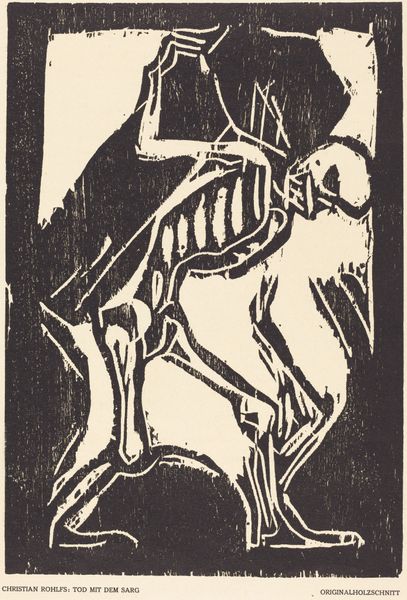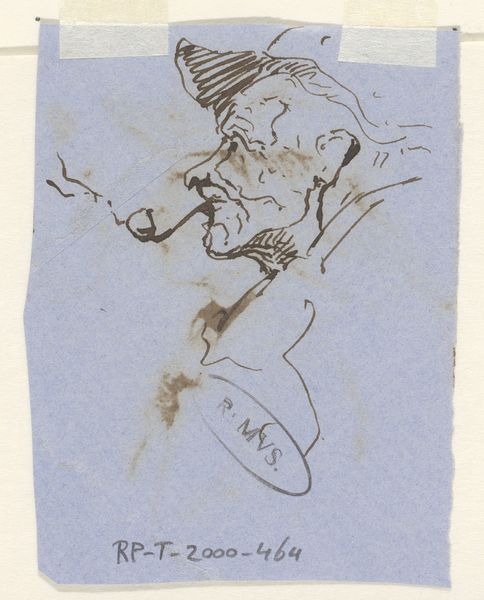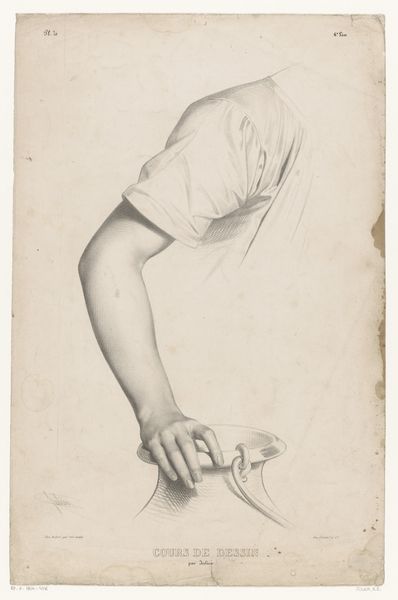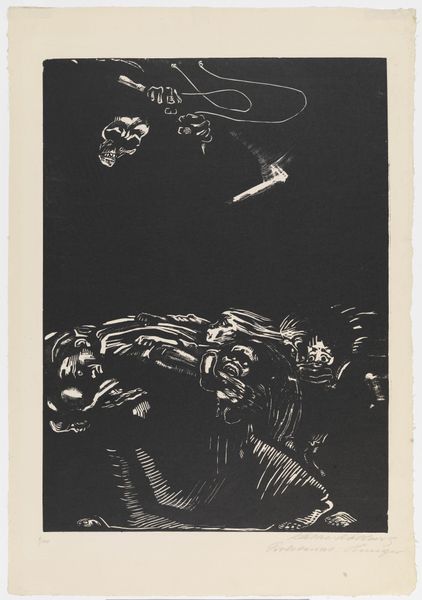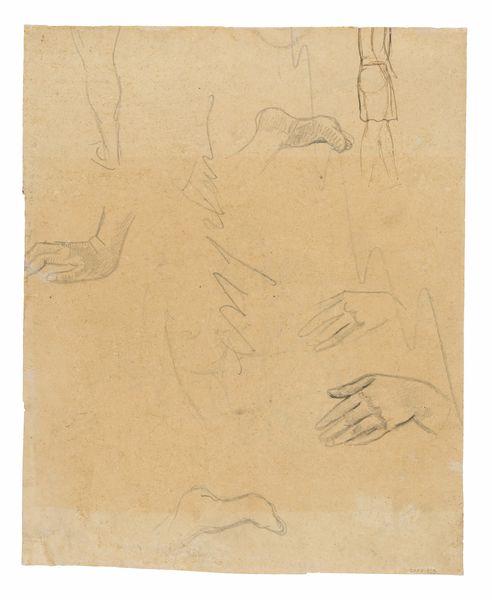
drawing, ink
#
drawing
#
figuration
#
ink
#
academic-art
Dimensions: 265 mm (height) x 204 mm (width) (bladmaal)
Curator: Welcome. We’re looking at a drawing called "Studie af en hånd," or "Study of a Hand," attributed to C.G. Pilo and dating from around 1711-1793. It’s rendered in ink and currently resides in the Statens Museum for Kunst. What are your first thoughts? Editor: It strikes me immediately as a symbol of control. The tight grip on that shaft, the unseen tension... it’s imbued with a certain suppressed power, or perhaps determination. Curator: That’s a fascinating read. For me, I'm drawn to the specific material choices. Ink, particularly during Pilo’s time, was an accessible yet precise medium, implying perhaps an economy of means, a focus on the practical training needed for academic art. Was this piece meant to be preparatory in nature, a simple skill excercise? Editor: It could very well be. The academic tradition valued anatomical studies for symbolic representation, so understanding musculature and tension was vital. Consider what this hand could represent, wielding power, authority or perhaps guidance, ready to punish. Curator: Absolutely. The way the fingers are articulated gives a sense of deliberate force and skill, something highly valued within artistic academies of that period. This could easily be someone building up to master portraits that rely on similar expressive gestures. Editor: Indeed, gestures speak volumes. But there's an ambiguity here too. The subject is gripping something, but that object itself has no identity in this drawing, and thus serves as something more psychological than practical. The hand as signifier is everything. Curator: That ambiguity is a result of the piece, perhaps deliberately, prioritizing technical proficiency. If the context for such work, however is located within artistic training—to demonstrate masterful control of light and shadow for expressive communication. Pilo would have had students create such works repeatedly. Editor: Still, what remains with me is that this is the hand of someone who will lead; perhaps someone mercilessly controlling; and capable to guide at will. Curator: An astute observation. Thinking about the art practices and what such studies mean within their respective spheres shifts how the piece reads quite a bit.
Comments
No comments
Be the first to comment and join the conversation on the ultimate creative platform.
